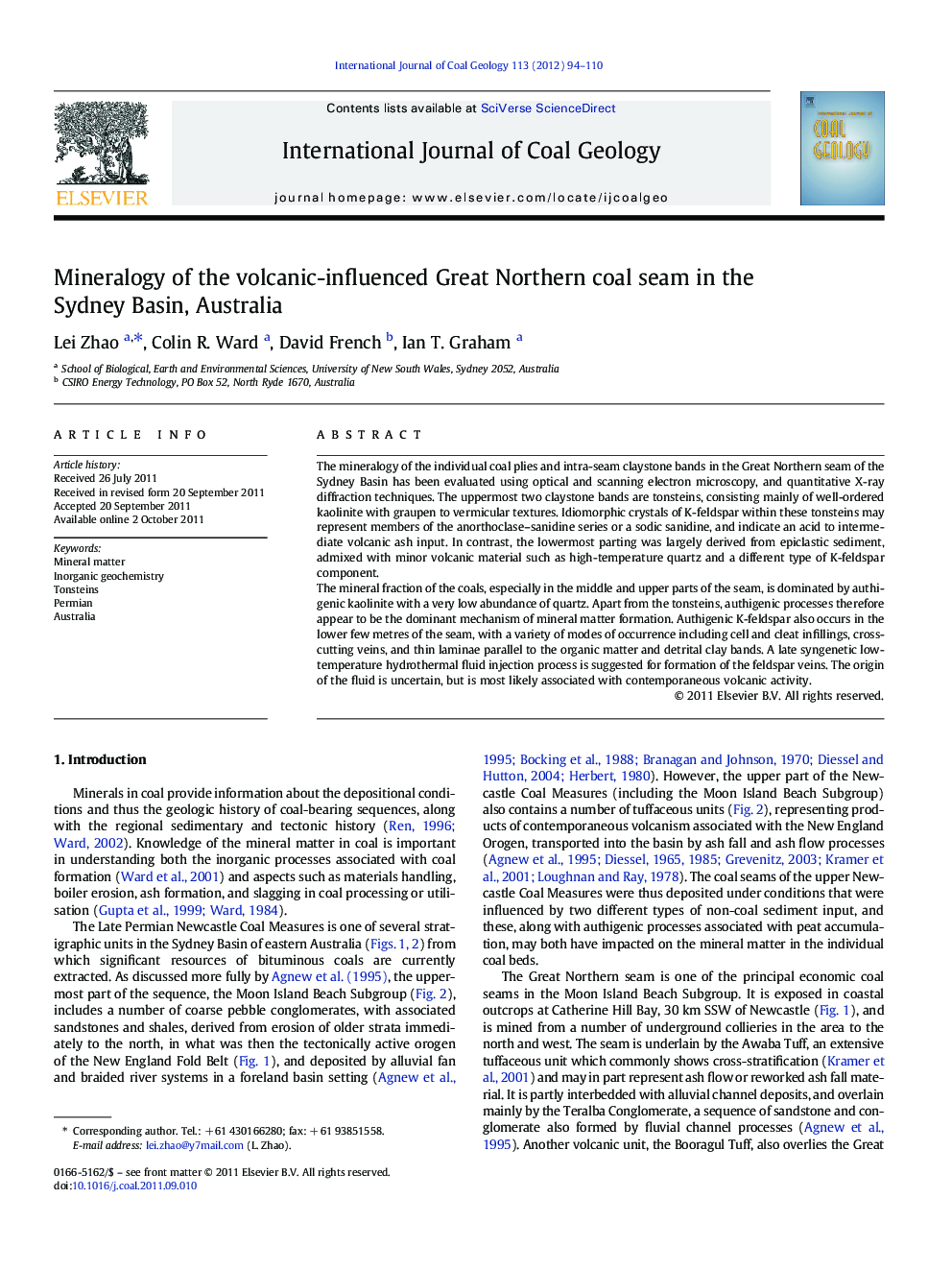| Article ID | Journal | Published Year | Pages | File Type |
|---|---|---|---|---|
| 1753646 | International Journal of Coal Geology | 2012 | 17 Pages |
The mineralogy of the individual coal plies and intra-seam claystone bands in the Great Northern seam of the Sydney Basin has been evaluated using optical and scanning electron microscopy, and quantitative X-ray diffraction techniques. The uppermost two claystone bands are tonsteins, consisting mainly of well-ordered kaolinite with graupen to vermicular textures. Idiomorphic crystals of K-feldspar within these tonsteins may represent members of the anorthoclase–sanidine series or a sodic sanidine, and indicate an acid to intermediate volcanic ash input. In contrast, the lowermost parting was largely derived from epiclastic sediment, admixed with minor volcanic material such as high-temperature quartz and a different type of K-feldspar component.The mineral fraction of the coals, especially in the middle and upper parts of the seam, is dominated by authigenic kaolinite with a very low abundance of quartz. Apart from the tonsteins, authigenic processes therefore appear to be the dominant mechanism of mineral matter formation. Authigenic K-feldspar also occurs in the lower few metres of the seam, with a variety of modes of occurrence including cell and cleat infillings, cross-cutting veins, and thin laminae parallel to the organic matter and detrital clay bands. A late syngenetic low-temperature hydrothermal fluid injection process is suggested for formation of the feldspar veins. The origin of the fluid is uncertain, but is most likely associated with contemporaneous volcanic activity.
► Seam profile changes from mainly detrital input at the base to mainly authigenic kaolinite at the top. ► Tonstein bands near top of seam have graupen and vermicular kaolinite, plus euhedral K-feldspar. ► Hydrothermal K-feldspar veins occur within the organic matter in the lower part of the seam.
